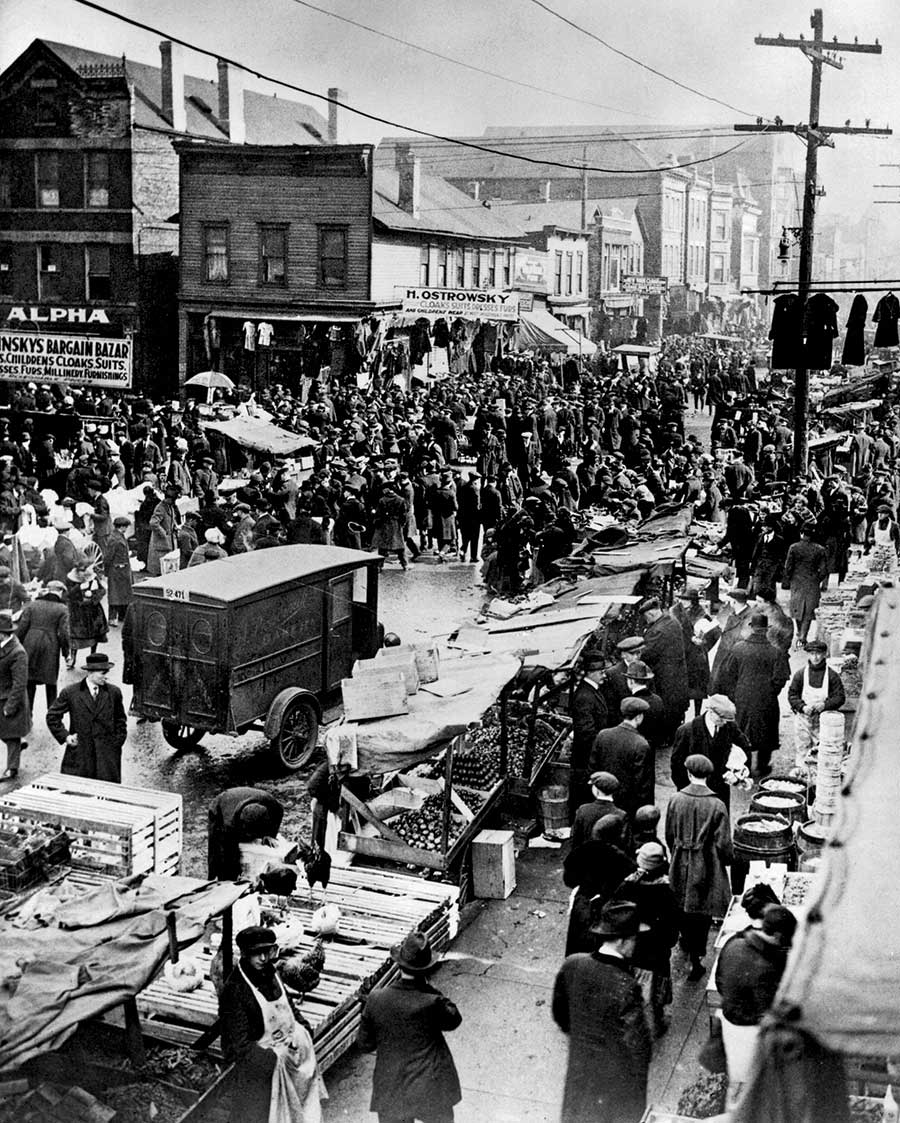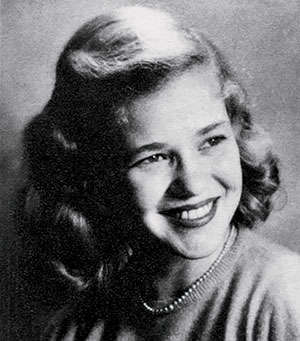
Three years ago, at the age of 87, my grandmother Elaine Fishman decided to take a memoir-writing class. She’d always been an avid reader, but who knew she was also a prolific writer? Since starting the class, she’s written dozens of stories — usually vignettes of just a few paragraphs — chronicling her long life, which began in Albany Park in the 1920s, back when there were still people around who remembered the Great Chicago Fire. Reading her anecdotes, I’ve learned a lot about the origins of my family, going back to my grandmother’s parents, Russian Jews who immigrated at the turn of the 20th century, and their parents too. More than that, though, I’ve been able to gaze across the years at a younger Chicago, one that sounds a lot more like the Old World than the New. Here is Grandma’s description of shopping for Sabbath dinner with her own grandmother:
First we went to the bakery; the smells were sweet yet pungent from the fresh onion rolls. Grandma purchased a braided, shiny brown challah, baked just in time for the Sabbath. We turned down Kedzie toward the fruit and vegetable market. Grandma picked out celery, carrots, parsnips, and two or three onions. The owner added up the cost with a pencil on a brown paper bag. Once again on the crowded avenue, we passed a man grinding horseradish. The fumes made my eyes sting. Next destination: the live chicken store, which held countless cages, each enclosing a clucking chicken. After some banter about the price, the butcher disappeared in the back and returned with the chosen bird, dead and plucked! Later, as we all sat down to dinner, my grandmother complained, “The chickens aren’t what they used to be.”
Reading that last line, I couldn’t help thinking about how, at only 30, I already share my great-great-grandmother’s critical nostalgia for the way things used to be.

Grandma’s stories depict a city where life happened on sidewalks and stoops, not on smartphones, and simple things like a walk to a faraway neighborhood counted as a big deal:
My father grew up in a family of seven sisters, who all lived in Rogers Park. One lovely summer day, my father asked me to join him on a walk to visit them. When I started to tire and complain, he urged me on, saying we were coming to a famous taffy apple shop. Shoemaker’s, what heaven! The day grew warmer and I was thirsty. We stopped in a bar. There was sawdust on the floor and a bowl of hard-boiled eggs on the counter. My father had a beer and the bartender gave me a Coke. My aunts could not believe that my father and I had walked all that way, but for me, walking hand in hand with my father is one of my happiest memories.
My grandmother still takes long walks, despite a recent knee replacement, starting from her apartment on East Randolph, strolling around the Loop or the lakefront, and usually ending up in Maggie Daley Park, where she watches children playing or, in winter, ice-skating.
While watching the skaters whirl around on the ice ribbon, my memory was sparked back to my ice-skating days in my uncle Sammy’s borrowed hockey skates stuffed with newspaper. Sometimes, in spite of dire threats from the mothers of the neighborhood kids, we would skate on the river under Argyle Street. We would race and play crack-the-whip. Later, I was able to walk a couple miles to Gompers Park: a young skater’s heaven where the ice pond was perfect and there was a warming house and even hot chocolate at 5 cents a pop.
The loosely supervised childhood that she remembers is as hard for me to imagine today as a Chicago River that freezes thick enough to skate on. Her youth sounds so much freer than mine, and yet she was also more connected to the people around her. On her block in Albany Park — not far from where I lived for a few years in my 20s and barely knew the names of my neighbors — no one was a stranger:
I was in high school during the war. My freshman year, word got out that if we knit socks or scarves for the servicemen, we would earn an A in Miss Sheridan’s algebra class. But other than that, and saving tin cans and balls of tinfoil on our back porches, the war was far away. Except when I noticed the star in the Veeck family’s window. Stars represented a son or brother in the service. Bill Veeck was somewhere in the Pacific. I remember a rainy Friday morning during spring vacation in 1943. The doorbell rang. It was Grandmother Veeck. She was ringing all the doorbells. Bill was dead. He was killed in battle. The war came home, and my heart was struck with grief as that blue star turned to gold.
Grandma’s husband, my papa Guy, also served in World War II, in the navy. Some of my grandmother’s best writing describes their lifelong love affair. In one story, she writes about dancing with my grandfather in her parents’ kitchen while dressed in magenta taffeta pajamas. In another, she talks about the letters my grandfather sent her while overseas. He was a gifted artist and adorned the envelopes with drawings. Eventually, the postman knew where to deliver the letters without having to look at the address.
My grandparents married young, just after my grandfather returned from the war. I met my own husband, Jonah, when I was 22. At the time, my mother worried I’d met him too soon. My grandmother never thought so. When Jonah and I decided to get married seven years later, I knew I wanted to begin my wedding day with Grandma. I spent the morning, curlers in my hair, hanging out with her in her apartment. We looked down from her 16th-floor window at our Chicago, now the home and heart of my love story too. Before we left for the wedding, my grandmother handed me a slim white envelope. Inside was a folded sheet of paper. She had written me a story. She’d titled it “No Regrets”:
I was only 21 years old when I married Guy. Our wedding was small, only 12 people in attendance. I wore a dark brown silk dress with a full skirt and a lace top; it was knee-length. After the ceremony we piled into two cars and headed downtown to the Drake Hotel for dinner. A simple wedding? Yes. But it was a good marriage, and I never, ever missed the grand ball. Big or small, grand or simple, what matters is what happens after the celebration.
Now, a year into my own marriage, as my husband and I continue to navigate our newly entwined lives, I unfold that piece of paper sometimes. Like all of Grandma’s stories, it makes me feel the past is something worth holding on to.


